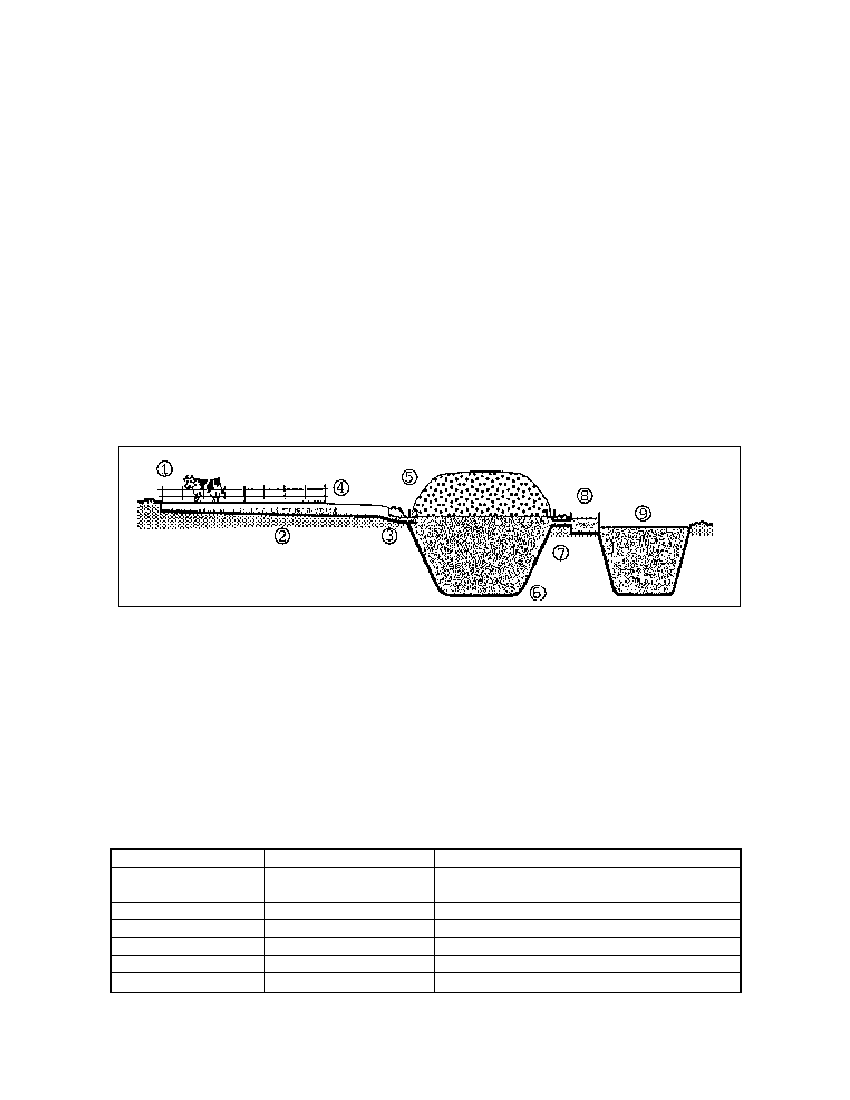
- Plants of a size exceeding 100 m³ usually cannot be made of masonry, i.e. the types of plant
discussed in chapter 5 cannot be used.
The choice of plant is limited to either the mechanized types used in industrial countries or simple,
large-scale plants. Experience shows that most simple, large-scale plants are
- of modular design,
- usually equipped with channel digesters,
- and require the use of substrate from which the scum-forming material has been removed in
order to get by with either low-power mechanical mixers or none at all.
Since large-scale biogas plants produce accordingly large volumes of biogas, the generation of
electricity with the aid of a motor-generator set is of main interest.
The two Ferkessedougou biogas plants situated in the northern part of Cote d' Ivoire stand as
examples of a successful large-scale biogas-plant concept based on a simple design. They have
been in operation at the local cattle-fattening station and slaughterhouse since 1982 and 1986,
respectively, where they serve in the disposal of some of the excrements produced by an average
number of 2500 head of cattle. The plant consists of a simple, unlined earth-pit digester with a
plastic-sheet cover serving as gasholder. The gas is used for generating electricity, heating water
and producing steam.
Fig. 6.2: Biogas plant in Ferkessedougou - system OEKOTOP. 1 Cattle feedlot, 2 Manure gutter, 3
Feedpipe, 4 Sluice, 5 Rubber-sheet gasholder, 6 Earth-pit digester, 7 Discharge pipe, 8 Impounding
weir, 9 Slurry storage (Source: OEKOTOP)
At present, some 20% of the slaughterhouse's electricity requirement is covered by the biogas
plants, and the biogas-driven steam sterilizer saves 50 000 I diesel fuel each year. The total initial
investment amounting to 60 million F.CFA yields annual savings of approximately 12 million F.CFA
after deduction of the operating costs (1 DM = 150 F.CFA).
The Ferkessedougou biogas plants demonstrate how even large-scale installations can keep
biogas technology cost-efficient by relying on simple designs, e.g. large digester volume despite low
cost of construction.
Table 6.2: Technical data of the Ferkessedougou biogas plant (Source: OEKOTOP)
No. of animals
Digester volume
Gasholder volume
Slurry storage volume
Retention time
Daily substrate input1
Biogas plant I
700 head of cattle in 12
feedlots
400 m³
80 m³
300 m³
40-2s days
10-18 m³/d
Biogas plant II
810 m³
>600 m³
3500 m³
40 -22 days
20-38 m³/d
85